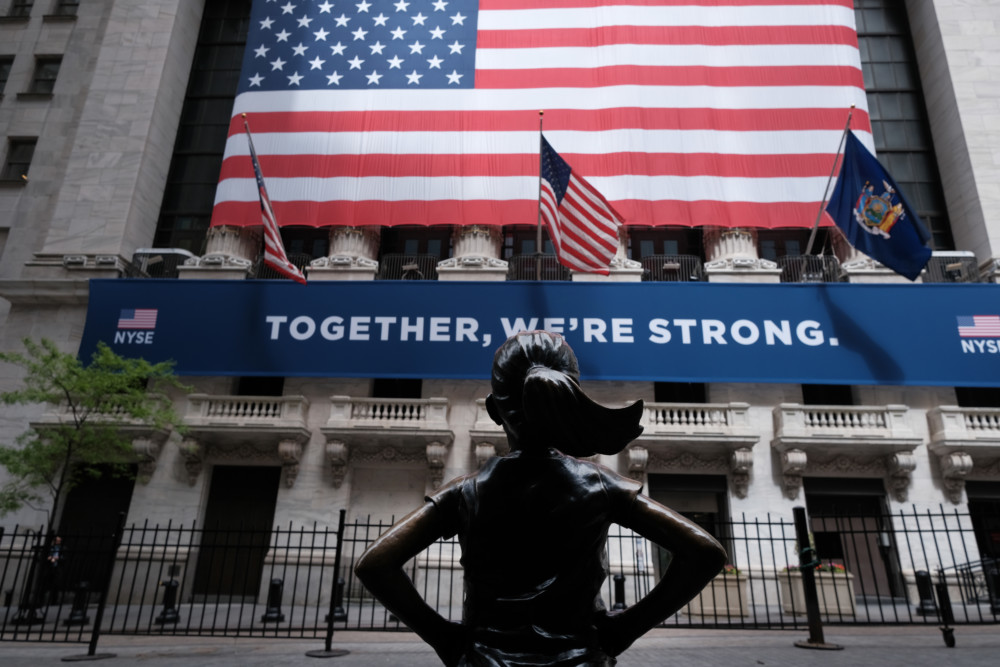By Jeran Wittenstein and Aoyon Ashraf
Bloomberg News
WWR Article Summary (tl;dr) Will “in person-live” investor conferences be a thing of the past? During the pandemic, virtual conferences have significantly grown in popularity. But are they popular because they are the only option right now?
Bloomberg
When the pandemic hit in March, Wall Street banks scrambled to switch their long-standing investor conferences to a virtual format. They’re now luring more people than traditional conferences, perhaps obvious given how easy it is to log on, but the popularity is even surprising people who organize them.
More than 5,000 people logged on to a virtual technology conference hosted by JPMorgan earlier this month, more than twice the draw for a typical in-person event. Citigroup’s global energy and utility conference set an attendance record with 550 people, double from the year before. UBS’s health care conference last week saw registration surge above 30%.
“People have been surprised by how effective the virtual world can be,” said Erica Moffett, Oppenheimer & Co.’s head of research marketing services.
Of course, it’s a bit early to declare the end of in-person conferences. While investors are flocking to the virtual ones, one explanation is that they have little choice, they can’t get on an airplane or find a hotel. And some participants who do log on aren’t big fans anyway, bemoaning the loss of networking and subtle personal clues. (Bloomberg LP, the parent company of Bloomberg News, also hosts investor conferences.)
Matt Hawkins, who invests in the cannabis industry, is on the fence about the whole thing. While he finds virtual conferences useful and remarkably easy, he said there’s a big drawback: He isn’t able to “kick the tire” on a potential transaction.
“Pulling the trigger in a new investment for us is almost impossible” without meeting management face-to-face and visiting production lines, said Hawkins, managing director at Entourage Effect Capital.
The big attendance numbers seem to belie the hoary notion that to entice people to invest in your company you need to shake hands, look them in the eye and observe body language. That would be a relief for Wall Street firms anxious about whether this time-honored piece of their business, connecting corporate executives with potential investors, could survive in a social-distancing world.
For many, virtual conferences are at least a respite to the drudgery that in-person events can entail. Randy Smallwood, chief executive officer of Wheaton Precious Metals Corp., attended in April the World Gold Forum, traditionally held in Zurich, for the first time only because it was virtual and didn’t require travel. He said he ended up having relaxing one-on-one meetings with representatives of 14 funds he wouldn’t have normally met.
“I hate to say this, but when you are at in-person conferences, it tends to be more like speed dating,” Smallwood said. “It’s a lot more rushed compared to the virtual conference that I was on.”
Oppenheimer had to quickly convert its health care conference, the firm’s biggest, into a virtual event in March, just as infection rates were spiking across the U.S. Moffett acknowledged she wasn’t confident the remote format would work, a big worry given how conferences are “an exceptionally vital and critical part of our business,” she said, but feedback was positive.
Firms are continuing to tweak the virtual events to find the right combination. Cowen Inc.’s technology, media and telecommunications conference this week was extended to four days from two and all presentations are being done in a “fireside chat” format in an effort to keep investors engaged, according to Kelly Weigel, head of marketing and client services. And her team is working on other ways to foster networking through new vendors and different technologies.
Those changes are aimed at enticing people like Jason Benowitz, a senior portfolio manager with Roosevelt Investment Group. He typically goes to about 40 conferences a year but is attending fewer than half as many now that they’ve moved to the virtual type. The ease of not traveling fails to make up for the absence of networking and engaging with presenters on the sidelines. And he’s bothered that he can’t take the temperature of a room of investors.
“You get a sense of whether the topics being discussed have interest in the investor community,” he said. “Is it standing room only or can they barely fill 20 seats? That can be helpful.”
Sometimes, though, it’s the intangibles that make or break an event. UBS’s oil and gas conference, typically held in Austin, Texas, went on as a virtual event last week. Although the analysts acknowledged record engagement with investors, they noted the absence of one key element.
“Most are missing Austin’s B-B-Q,” UBS analyst Lloyd Byrne wrote in a note to investors.
___
Distributed by Tribune Content Agency, LLC.














































































































































































































































































































































































